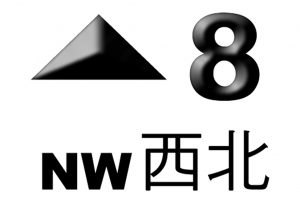By Localiiz
Branded | 17 May 2024
By Localiiz
Branded | 14 May 2024
Copyright © 2025 LOCALIIZ | All rights reserved
Subscribe to our weekly newsletter to get our top stories delivered straight to your inbox.
[pro_ad_display_adzone id="73367"]

A storm has been identified and could potentially turn into a typhoon. But stay seated, don't panic, everything is fine. Your day will continue as usual, just be aware. This sign could be displayed on the Hong Kong Observatory website and app for days, because what it means is that the typhoon is centered within 800km of Hong Kong and could hit within a day or two – or not at all. So stay cool.

There's still no need to panic. When a T3 signal is issued, you can expect heavy rain with strong winds up to 110km. Winds are normally expected to become generally strong in Hong Kong within 12 hours after this signal is issued. Winds over offshore waters and on high ground may reach gale force. Generally, a T3 will occur around a dozen times a year in Hong Kong, i.e. it's pretty common.

Hurray, you get to go home! This signal means that gale winds or stronger winds are fast approaching the city near sea level, with a sustained wind speed of between 63 and 117 km/h from the quarter indicated, and gusts which may exceed 180 km/h. The wind condition is expected to persist, but it's nothing to worry about, as plenty of warning is usually given hours before a T8 signal is issued, giving you ample time to get home. This signal tends to only last for a day or even less, however everything closes when the signal is hoisted, including all public transport, schools, shops, restaurants, ferries, trains, and flights. A T8 signal is generally issued about once or twice a year, so not too often.

At this moment you should be at home watching Netflix with a cup of tea, because a T8 signal would have already been hoisted. A T9 signal is very rare, but when it does get issued, this means that gale winds are increasing or are expected to increase significantly in strength from between 180km/h and 220 km/h.
When the T9 signal is issued, you should follow the same directions as with a T8. Stay indoors and away from exposed windows to avoid flying debris. Try to remain calm and follow the news for any updates. Get some board games out, turn on Netflix, and stay put until things calm down outside. Once the T9 signal is lifted, it might take a little longer for everything to get back to normal, but Hong Kong is pretty adept in these situations.

Ok, so things are pretty serious now, but fear not because Hong Kong is extremely skilled when it comes to dealing with typhoons. It is not very often that we see the issuing of the ultimate tropical cyclone warning signal of T10, but when we do, this means that the storm is passing very close or directly over Hong Kong, so you could potentially be in the eye of the storm. This signal means that hurricane force wind is expected or blowing with sustained speed reaching upwards from 118 km/h and gusts that may exceed 220 km/h.
[button color="blue" size="medium" link="https://localiiz.us4.list-manage.com/subscribe/post?u=c2964a434922598f5d8ee53ff&id=07d327a2e8" icon="" target="true"]Subscribe to receive our weekly newsletter[/button]
Top